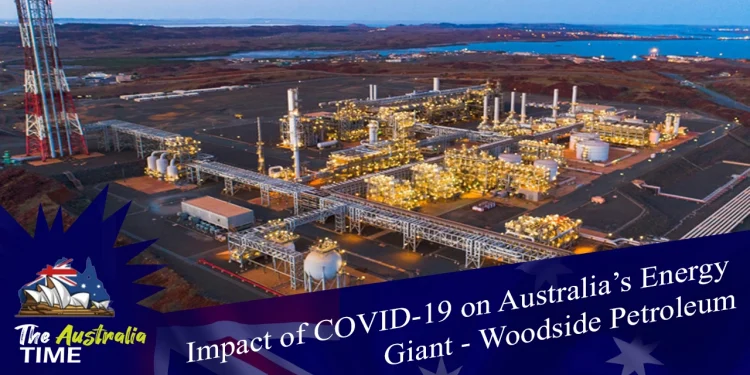The petroleum sector is the backbone of the world’s economy, and Woodside Petroleum is a big name in the Australian energy sector. Although COVID has affected all businesses, its effect on the oil and gas segment is substantial. The global oil prices went down from $60 – $70 per barrel to $15 per barrel, and demand condensed radically due to lockdown as numerous industries, like travel and tourism, came to a halt. Likewise, gas production dropped between 40% and 50%, and some oil fields were closed down.
Like any other country, Australia’s energy sector was also affected by COVID-19, and the country’s energy leader, Woodside petroleum, wiped billions of dollars off the value of its assets. The pandemic led to some of the company’s proposed LNG developments being deferred. It also had to cut 400-500 jobs due to strict COVID-19 rules on operational activities and the drop in oil prices.
Woodside Petroleum – Company Profile
Woodside Petroleum is an oil and gas manufacturer, established in 1954, with its headquarters in Perth. It explores, develops, produces, and supplies energy internationally and in Australia. With 65 years of experience, the company led the development of the LNG sector in the country. It controls a network of underwater and pipeline structures in Australian waters. It maintains international exploration of assets in Africa, Asia, Oceania, America, and Europe.
Woodside Petroleum finalized its merger with BPH in June 2022, which was initially announced in August 2021. The company has attained the complete capital stock of BHP Petroleum International and issued 914,768,948 new Woodside shares to BHP, which will be distributed to the qualified stakeholders.
The merger made the company the largest energy business on the Australian Securities Exchange (ASX). The merger had an enormous impact on Woodside share price in ASX. The shares also benefitted from concerns over Russia’s gas supply to Europe. Woodside maintains and runs several oil expansions offshore Western Australia, including the Okha FPSO and Naganhurra FPSO.
Business Segments
The company operates through the following segments:
North West Shell Business Unit
It engages in the exploration, expansion, production, estimation and marketing of LNG, condensate, pipeline natural gas, and crude oil.
Pluto Business Unit
It engages in the exploration, expansion, production, estimation and sale of LNG in assigned permit areas.
Australia Oil Business Unit
It engages in the exploration, expansion, production, estimation and marketing of LNG, condensate and pipeline natural gas in allocated licensed areas, including Mutineer-Exeter, Otway and Vincent.
The Wheatstone Segment
This business segment engages in the exploration, development and evaluation of LNG and condensate.
Company Over the Years
- Woodside Petroleum secured its first offshore exploration license in 1956.
- The company was given the rights of exploration in June 1963 over more than 367,000 square kilometres off North-Western Australia in what is also known as North West Shell.
- Exploration drilling started in 1967, which resulted in significant gas and condensate findings in 1971.
- The Goodwyn Gas and Condensate Field were discovered in 1972.
- A contract was signed in September 1980 with the State Energy Commission of Western Australia to supply gas to homes and industries. The deliveries began in August 1984.
- Shell pursued to purchase the remaining shares of the company in 2001. However, the takeover move was blocked by Treasurer of Australia, Peter Costello, on the grounds of national interest.
- In 2017, Royal Dutch Shell plc. announced an agreement to sell parts of its stake in Woodside Petroleum.
- In 2022, the company announced that it had joined forces with the industry to design an improved offshore inspecting system, which will help explore and expand new horizons in robotics. The collaboration rose in response to expected COVID-related supply chain risks.
- In June 2022, the Supreme Court of Western Australia ruled in favour of Woodside in a dispute over the early termination of an FPSO charter. Malaysia’s Bumi Armada filed the appeal.
That is all about the history and business of the Australian oil and gas manufacturing giant. Hopefully, you find the information useful and helpful. If you like reading about business, technology, life, science, tourism, fashion, history, and more, keep visiting The Australia Time to read about anything you like.
FAQs
Let’s see the answers to some of the frequently asked questions about Woodside Petroleum to provide you with additional information about the company.
Who owns Woodside Petroleum?
BHP distributed Woodside shares in June 2022 as an in-specie dividend after finalising the merger. Woodside agreed that the merger with BHP was in the best interest of its shareholders.
Is Woodside Petroleum a good investment?
The consensus on Woodside is that it is a moderate buy. The stock appears to be undervalued based on Morningstar’s fair value of $32.59. The stock price has gained value by about 43% since the start of 2022.
Should I buy Woodside Petroleum Shares?
Woodside Petroleum share price fell almost 5% to $ 31.03 on 21 July 2022, while the quarterly update released by the company revealed solid revenue growth. The company’s share price has been gaining ground in 2022, driven higher amid the company’s merger with BHP Group Ltd. Woodside shares have gained 45% in the past year, jumping nearly 48% this year.
What is Woodside Petroleum called now?
Woodside Petroleum rebranded and changed its name to Woodside Energy. The company said all references to Woodside Petroleum Ltd. had been replaced with references to the new name. Its ticker code on the Australian Securities Exchange (ASX) was changed on May 25, 2022.
















